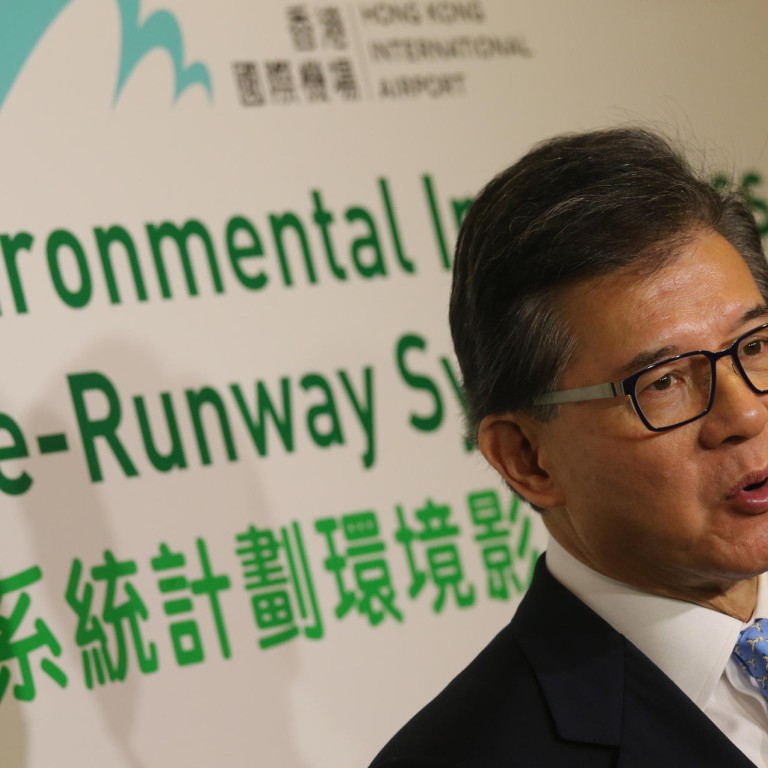
Environmental report key to future of third runway at Hong Kong airport
Public must accept assessment on airport expansion, which green groups say will harm marine environment
The fate of Hong Kong's costliest infrastructure project - a third airport runway - hinges on how well the public accepts the results of an environmental impact assessment (EIA) unveiled yesterday.
Adding another runway would boost the capacity of the airport by about 44 per cent by 2023 to meet expected growth in air traffic. The existing two runways are forecast to reach capacity in 2019, according to the Airport Authority.
But environmentalists worry the project, the city's biggest since the construction of the airport in the mid-1990s, could spell disaster for the area's marine ecology because 672 hectares of seabed will be reclaimed.
They say endangered Chinese white dolphins living in or using the affected habitats off Lantau will be threatened, despite a pledge by the Airport Authority to expand a marine park when work is complete.
The authority's chairman, Vincent Lo Hong-sui, called the results of the two-year EIA study, which is now subject to public consultation, the "most comprehensive" ever conducted in Hong Kong.
"Hong Kong International Airport is strategically important to sustaining the [the city's] development and economy," he said. "This is why we are doing everything practicable to address the likely environmental impacts."
No one from the authority had anything to say yesterday about the final price tag for the project, which was initially estimated at HK$136 billion but is expected to be tens of billions of dollars higher.
Tommy Leung King-yin, general manager for projects, said it was in the process of updating the cost, which would take into account all mitigation measures covered in the environmental impact report.
The airlines and logistics sector have thrown their weight behind the project, which they see as vital to maintaining the city's status as a regional aviation hub. The airport is among the region's busiest in terms of passenger and cargo throughput. The authority estimates the third runway (pictured on the right with a new terminal in an artist's impression) could deliver HK$912 billion in economic benefits over 50 years. But green activists say the social and environmental costs, including carbon emissions, could also be in the hundreds of billions.
As well as the issue of the dolphins, the report addresses the project's impact on air and water quality and noise pollution. It concludes they will be acceptable with mitigation measures. But green groups say the authority made assumptions favourable to the project in the assessment.
Public consultation on the report will be open until July 19, after which the head of the Environmental Protection Department will make a decision on the project, based on views submitted by the public and the Advisory Council on the Environment.
Environmentalists said while they had faith in the assessment system, they feared the advisory council was just a "rubber stamp".
"There are conservationists and academics sitting on this council, but there are also many who are pro-government," said Edwin Lau Che-feng, Friends of the Earth's head of advocacy and an ex-council member.
Projects have rarely been rejected since the EIA Ordinance came into force in 1995.

